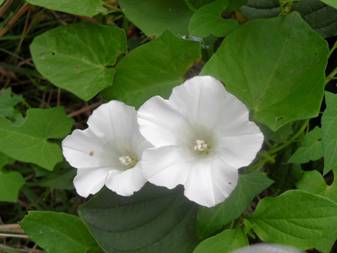
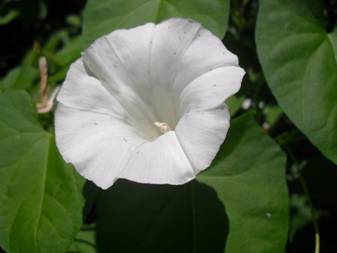
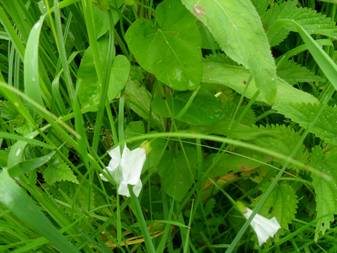
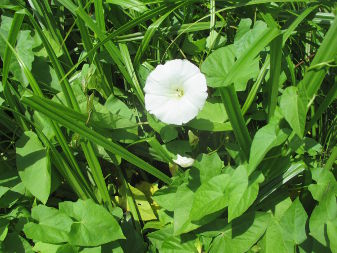
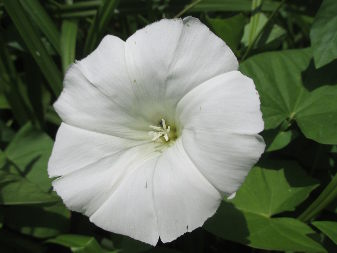
Hedge Bindweed (Calystegia sepium), fam. Convolvulaceae.
Occurs in the forest, around the lakes. Blooms in the mid-summer. While the flower is closed, it is easy to see a couple of heart-shaped bracts near the base of white petals, enclosing the calyx. This feature allows to distinguish hedge bindweed easily from field bindweed and morning glory.
All parts of the plant contain tannins (up to 9%), saponins and flavonoids. The aboveground part, besides, contains alkaloids. The resinous substance from the plant has strong laxative action. In addition, the plant has diuretic and anthelminthic properties, enhances wound healing. Overdose can result in poisoning, that is why hedge bindweed is usually not recommended to use in medicine.